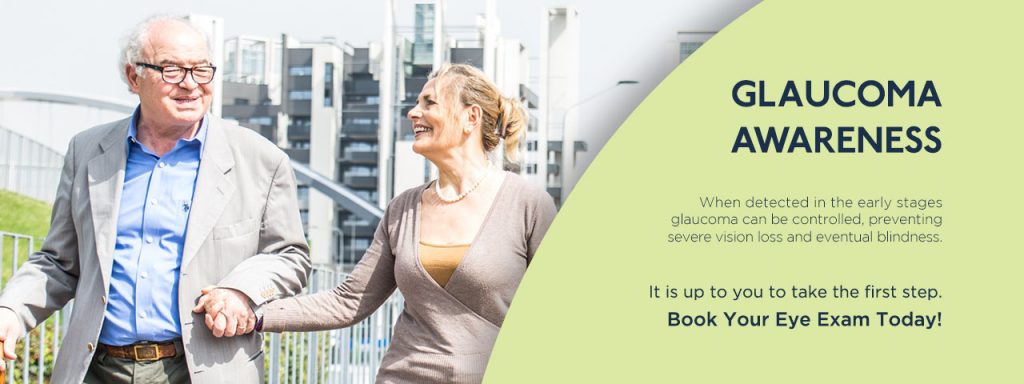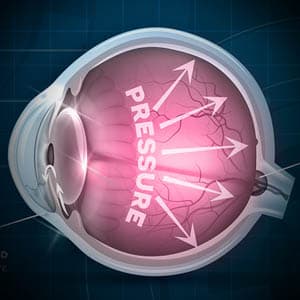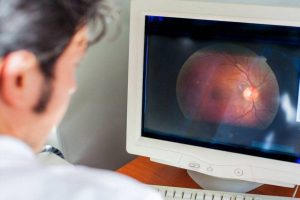Did you know that rock star Bono from U2 has glaucoma?
U2’s Bono is not alone, at least 3 million North Americans have glaucoma, but only 50% know they have it!
In 95% of glaucoma cases, it starts off asymptomatic and by the time the condition is noticed, the vision loss is irreversible. That’s why regular eye exams are so crucial, even if you don’t suspect a problem.
Schedule an eye exam with an eye doctor near you who knows the latest treatments for glaucoma to ensure the best possible outcome.
SEE RELATED: Glaucoma: What are the Signs?
What is glaucoma?
Glaucoma is an eye disease that damages the optic nerve – the only connection between the eyes and the brain.
Most cases are caused by a buildup of pressure within the eye. The longer the pressure builds, the more damage it causes to the optic nerve. Left untreated, the optic nerve will continually deteriorate, resulting in permanent vision loss or blindness.
Glaucoma: ‘The Silent Thief of Sight’
There are almost no obvious symptoms during the early stages of glaucoma – even as the optic nerve is suffering damage – for this reason glaucoma is known as the ‘Silent Thief of Sight’.
As the condition progresses patients will experience tunnel vision or notice patchy spots in their peripheral vision.
The more severe type of glaucoma (acute closed angle glaucoma) may cause symptoms like nausea, vomiting, headaches, severe eye pain, red eyes and blurred vision.
If there is any glaucoma history in your family it is important to contact an eye doctor near you.
How is glaucoma detected?
Glaucoma can only be detected through a comprehensive eye examination.
During an exam the eye doctor will assess a patient’s visual field, examine the optic nerve and test eye pressure, among other things.
Yearly eye exams, or as often as recommended, are necessary to diagnose and treat glaucoma, as early detection is key.
There are a range of tests used by an eye doctor for glaucoma. These tests include:
1. IntraOcular Pressure Tests (IOP)
- Air Puff Test – During this test a puff of air is used to gently bounce off the front of your eye. The device used calculates how much resistance the eye displayed to the air puff, revealing the amount of internal eye pressure.
- Blue Light Test (Goldmann tonometry) – After inserting numbing drops, an eye doctor will use a device called a slit lamp biomicroscopy to slowly move a flat-tipped probe until it gently touches the cornea.
- Tonometer – After applying some numbing drops to the eyes, the eye doctor will gently touch the eye with a small device that measures the eye’s internal pressure and resistance.
While the Goldman method may be considered the gold-standard for measuring eye pressure, all methods mentioned above are accurate, comfortable and, most importantly, safe.
2. Optical Coherence Tomography (OCT) scan
This is a non-invasive, computer-based diagnostic device that provides color-coded, cross sectional images of the retina, allowing for early detection and treatment of glaucoma, and other ocular diseases.
The OCT scan uses a laser (without radiation) to obtain high resolution images of the layers of the retina and optic nerve to locate any changes or ocular damage.
3. Visual Field Test
This is a diagnostic test that produces a computerized map of your visual field. It enables your doctor to measure the range of your peripheral vision, and detect any abnormalities in your visual field.
How is glaucoma treated?
While there is no way to prevent glaucoma, there are several treatment options that can help prevent or slow down damage to the eye and vision loss.
Eye drops
Prescription eye drops are usually the first treatment option used for early stages of glaucoma. These drops are used to help improve how fluid drains from the eye or helps decrease eye pressure by limiting the amount of fluid the eye produces.
Oral medications
When eye drops alone are ineffective, the eye doctor will likely prescribe oral medications to lower eye pressure.
Surgery and other therapies
Aside from eye drops and oral medications, the other glaucoma treatments eye doctors may recommend include:
- Drainage tubes – a small tube shunt is placed into the eye and acts as a ‘pipe’ to drain excess fluid.
- Filtering surgery – this surgical procedure decreases eye pressure by allowing fluid to drain from the eye.
- Laser therapy – Laser trabeculoplasty helps the fluid easily drain from the eye and is used to treat open-angle glaucoma.
- Minimally invasive glaucoma surgery (MIGS) – This option tends to cause fewer side effects and complications than standard glaucoma surgeries.
Since glaucoma is the silent thief of sight, make sure to catch it early — with a yearly eye exam.
LEARN MORE: Guide to Eye Conditions
Schedule an appointment with an eye doctor near you who can provide effective treatments and glaucoma management to preserve your vision as long as possible.










